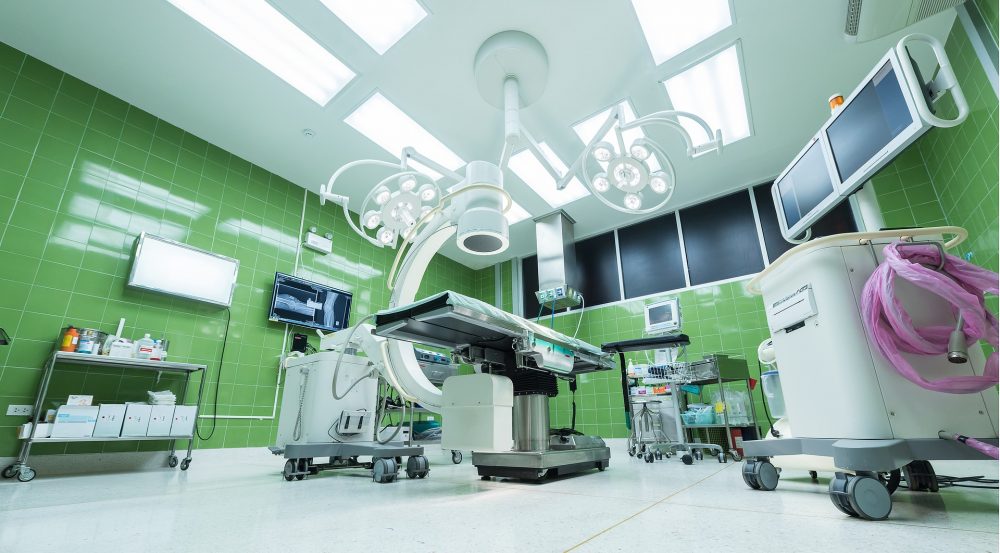It is widely acknowledged that incident reporting in healthcare is vital but the process can be challenging. In this article we explain the benefits of effective incident reporting and the processes involved in order to gain insights on how to improve patient safety.
A healthcare incident is any unintended event that could harm a patient, visitor or staff member – like giving the wrong medication or a slip and fall in a hospital. Reporting these incidents, even near misses where no harm occurred, is vital.
As the Devon Partnership NHS Trust highlights:
“There is overwhelming evidence that NHS organisations with a high level of incident reporting are more likely to learn and subsequently increase safety for people using their services, staff and visitors.”
By reporting incidents, healthcare settings can identify hazards and improve processes and systems to prevent future harm. Any medical staff who witnesses or are involved in an incident should complete an incident report form.
There are three key terms to note: ‘incident’ is any unintended event, ‘near miss’ is an incident that didn’t cause harm, and ‘patient safety incident’ is a more severe incident that caused harm or had the potential to cause serious harm.

What is the purpose of incident reporting in healthcare?
The core purpose of incident reporting in healthcare is to continuously improve patient safety by learning from incidents. It goes beyond just recording errors; it aims to identify underlying causes, like communication breakdowns, faulty equipment or poor processes and systems.
By reporting both incidents that caused harm and near misses, healthcare providers can proactively address hazards and develop targeted interventions to prevent future occurrences. This systematic approach ultimately fosters a culture of safety that benefits everyone – patients, staff, and visitors.
Benefits of incident reporting in healthcare
Incident reporting isn’t just a box-ticking exercise; it’s a powerful tool to create a safer healthcare setting for everyone. Benefits can be found across all levels of the healthcare system, such as:
Staff
Reporting helps identify areas where procedures or training can be improved, leading to a reduction in workplace stress and the risk of errors occurring. By learning from incidents, staff feel more empowered to contribute to a safer working environment and collaborative workforce.
Patients
Thorough incident reporting leads to better identification and mitigation of risks. This translates to fewer preventable complications and improved patient outcomes, ultimately leading to a higher quality of care.
General public
Members of the public are also encouraged to report a healthcare incident using the patient and public e-form. NHS England will not investigate individual reports but the information will be used to support national learning.
Healthcare providers
Reported incident data allows for targeted interventions and resource allocation, leading to more efficient use of resources. By proactively addressing hazards, the healthcare organisation can minimise the risk of costly legal issues and improve its overall safety record.

LRMS vs. PSIRF: When to report incidents
There is more than one system in which healthcare incidents are reported. Many organisations will have their own local risk management system (LRMS) which is typically an organisation-specific system for recording and managing incidents, risks, and near misses. It is used for internal tracking, analysis, and improvement purposes and, in NHS trusts, will link to the National Reporting and Learning System (NRLS).
The NHS has recently implemented the Patient Safety Incident Response Framework (PSIRF) which provides a framework for responding to incidents with potential for harm and learning. PSIRF provides a consistent platform which focuses on learning from incidents and improving patient safety. Organisations operating under the NHS Standard Contract must apply PSIRF principles when responding to patient safety events.
All patient safety incidents should be reported within the PSIRF framework, whereas reporting incidents via a local risk management system could depend on a number of factors specific to the type of incident, and whether the organisation operates under the NHS Standard Contract. Some smaller healthcare providers may not have an LRMS in which case incidents should be reported directly the NRLS using an e-form.
What is the incident reporting process?
An incident reporting process should be designed to be straightforward and encourage participation by all. Here is a breakdown of the typical steps:
- Report the Incident: Any medical staff who witnesses or is involved in an incident, even a near miss, should report it as soon as possible. This could be through one of the systems outlined above.
- Provide Details: The report should provide factual information about the incident, including the date, time, location, what happened, and any potential or actual harm caused.
- Submit the Report: Follow your organisation’s specific guidelines for submitting the report, whether electronically or through designated personnel.
- Investigation (if necessary): For serious incidents, a designated team will be assigned to investigate the root causes and contributing factors.
- Feedback and Learning: The reporting individual may receive feedback on the outcome of the investigation and any actions taken to prevent similar incidents. A database of these incidents can be established to see the bigger picture and identify any trends that can be shared between teams, departments and even other healthcare organisations.
- A just culture is paramount: The focus is on learning from incidents, not assigning blame. Reporting helps the NHS as a whole improve patient safety and create a safer working environment for everyone.
Occasionally an investigation is required following an incident report, which is determined by the level of harm caused. For minor incidents or near misses, the focus might be on immediate corrective actions. However, for serious incidents, where there is significant harm or potential for harm, a thorough patient safety investigation is crucial.

Incident reporting challenges
Even with its clear benefits, incident reporting in healthcare can face challenges that hinder its effectiveness. One key issue is a lack of proper reporting infrastructure. This includes outdated or cumbersome reporting systems, or a complete absence of a standardised process. If the reporting system is not user-friendly, or time consuming to use, staff are less likely to use it.
Similarly, unclear guidelines on what constitutes a reportable incident or inadequate training on how to file reports can create barriers and lead to under-reporting. Furthermore, analysing large amounts of data from reports can be difficult without proper tools, hindering the identification of key trends and areas for improvement. Sharing data across different trusts can also be challenging due to privacy concerns and technical limitations.
Another challenge lies in effectively cascading learnings from incidents to junior staff and healthcare assistants, the backbone of daily patient care. Their first hand experiences and insights are invaluable. However, traditional methods like lengthy reports may not be the most effective way to capture their thoughts and reflections.
Despite these challenges, reporting incidents is vital for patient safety and clinician well-being.
Not reporting could lead to disciplinary action within the healthcare organisation or even legal issues. Ultimately, by failing to report incidents, we miss opportunities to learn and improve patient care and keep everyone safe. This can lead to a higher risk of similar incidents happening again, potentially causing harm to patients, staff, visitors and to the organisation’s reputation.

Incident reporting solutions
Addressing incident reporting challenges demands a comprehensive strategy:
- User-friendly, web-based systems can streamline reporting and encourage participation.
- Clear standardised incident reporting guidelines and comprehensive training for all staff, from consultants to healthcare assistants, ensure everyone understands what to report and how to use the system.
- Regular safety briefings and open discussions about incidents foster a culture of transparency and safety.
- Robust Safety Management Systems (SMS), can help analyse existing incident reporting processes and policies and how they are implemented to identify potential system improvements.
- Involving staff at all levels when reporting incidents helps identify root causes and develop targeted interventions. Interactive workshops or focus groups specifically designed for junior staff can encourage feedback and ensure it is addressed.
Overcoming challenges like cumbersome systems and staff engagement is key. As one of the foundations of incident reporting in healthcare, an effective SMS is crucial to encourage the reporting of incidents so that valuable data can be gathered.
At Verita, we have extensive experience developing, enhancing and evaluating safety management systems so that trends, patterns and root causes of patient safety issues can be identified, leading to quality improvement. Please contact us or book a free consultation if you require assistance in this area.
User-friendly reporting tools, clear guidelines, and open communication are also essential to ensure everyone feels empowered to contribute. A Just Culture is paramount, one which focuses on learning, not blame, because it lays the foundations for continuous improvement by encouraging the reporting of incidents. This ultimately leads to safer care for patients, a more supportive environment for staff, and a more efficient healthcare organisation.
Improving healthcare incident reporting through technology
Advances in technology in healthcare can greatly assist incident reporting, making it easier to complete reports and identify trends. Healthcare applications such as Eva help to no only produce reports, but allow progress to be monitored across an organisation, as well as different sites, hospitals and healthcare systems. Sharing data securely across healthcare systems provides huge opportunities for learning which might otherwise be missed.
The use of digital technology in healthcare has been rising significantly in recent years but being traditionally risk-averse may have caused the health and care sectors to take longer to adopt new technology. The use of Snapchat and WhatsApp at work show that new technology can be readily adopted if the system is secure, quick and user-friendly. However, these systems often lack defined usage policies and procedures, with private groups making it difficult to police inappropriate content.
An important barrier to improving healthcare reporting technology, and the ability to learn from it, is interoperability and standardisation. Achieving true interoperability across healthcare systems will require collaboration across stakeholders within the industry as well as political will from regulators who can enforce common standards.
In summary
Incident reporting is a cornerstone of patient safety and ultimately prevents future harm. By having an effective system in place and reporting all incidents, even near misses, you can create a wealth of data that can be harnessed to identify hazards, pinpoint root causes, implement targeted interventions, improve processes and continuously improve safety for everyone.
Verita helps independent and NHS healthcare organisations manage policies and processes involved with incident reporting and can work alongside organisations to build a safety management system appropriate to the size and nature of your activity.
If you would like to know more about incident reporting in healthcare and how we can assist your team, please book a free consultation or contact Ed Marsden on 020 7494 5670 or [email protected].





